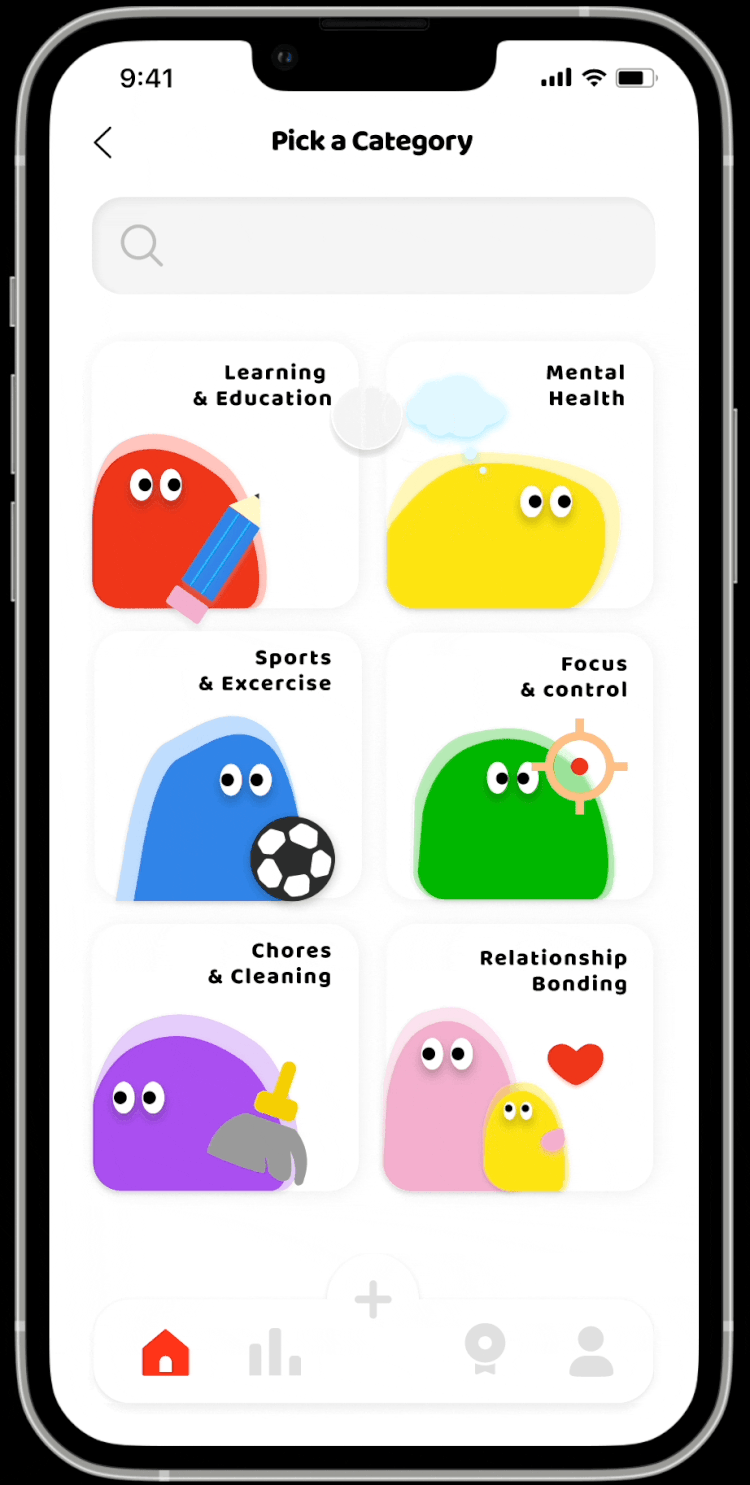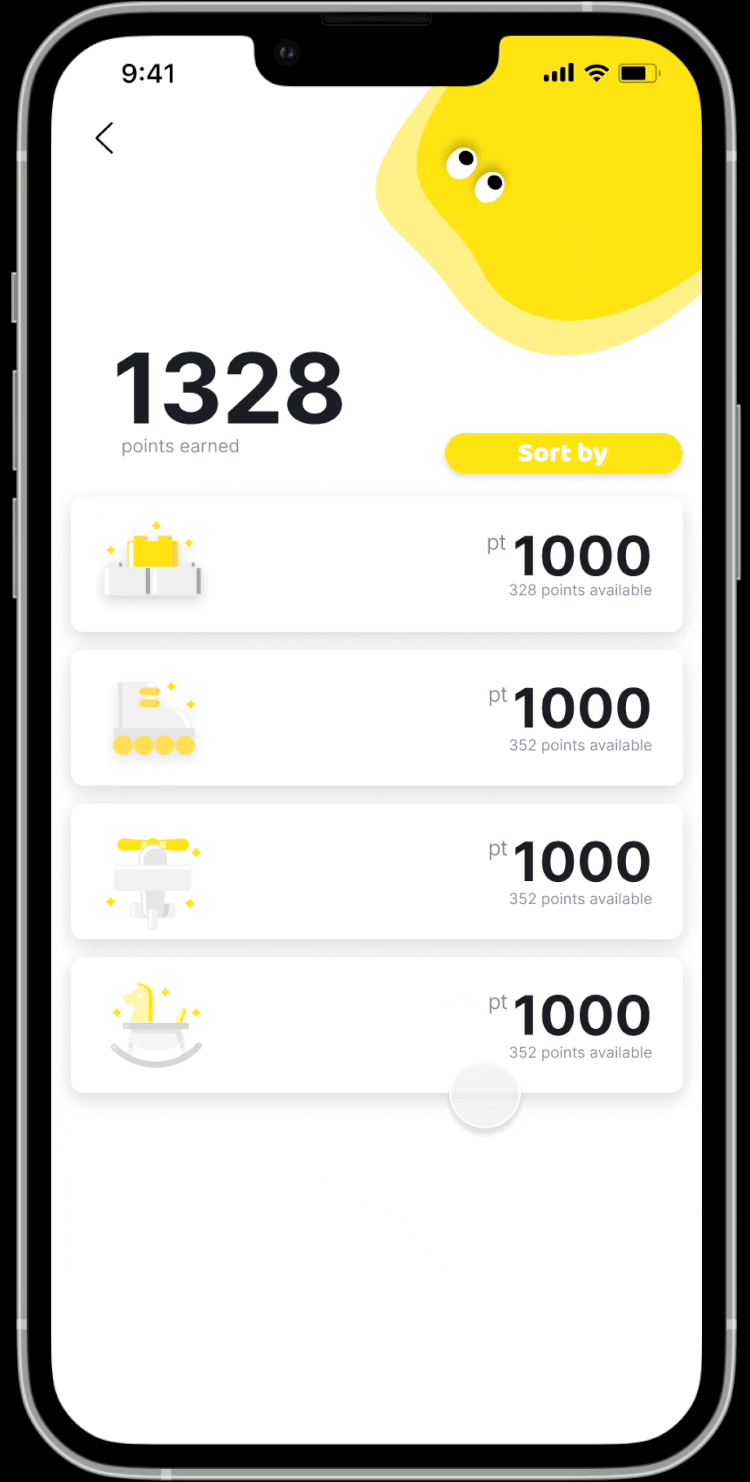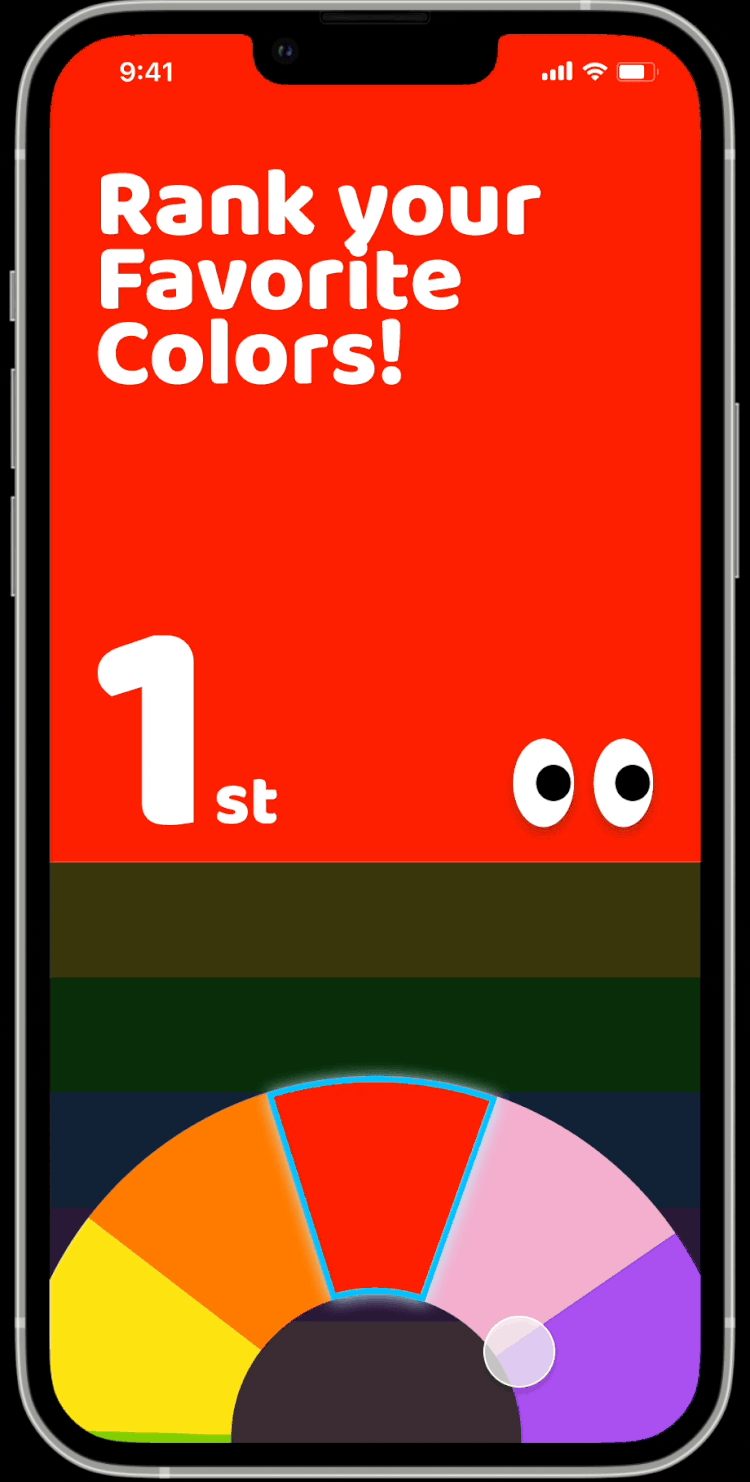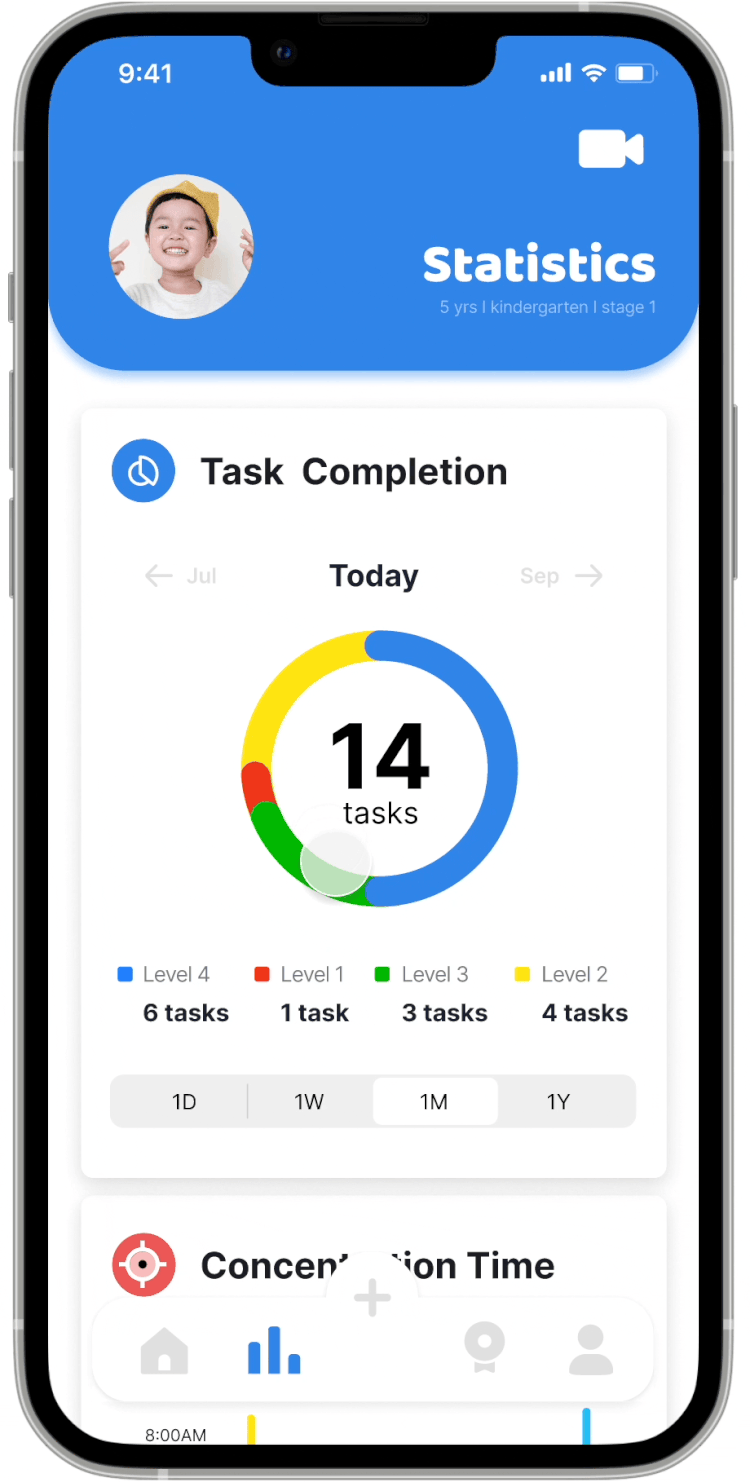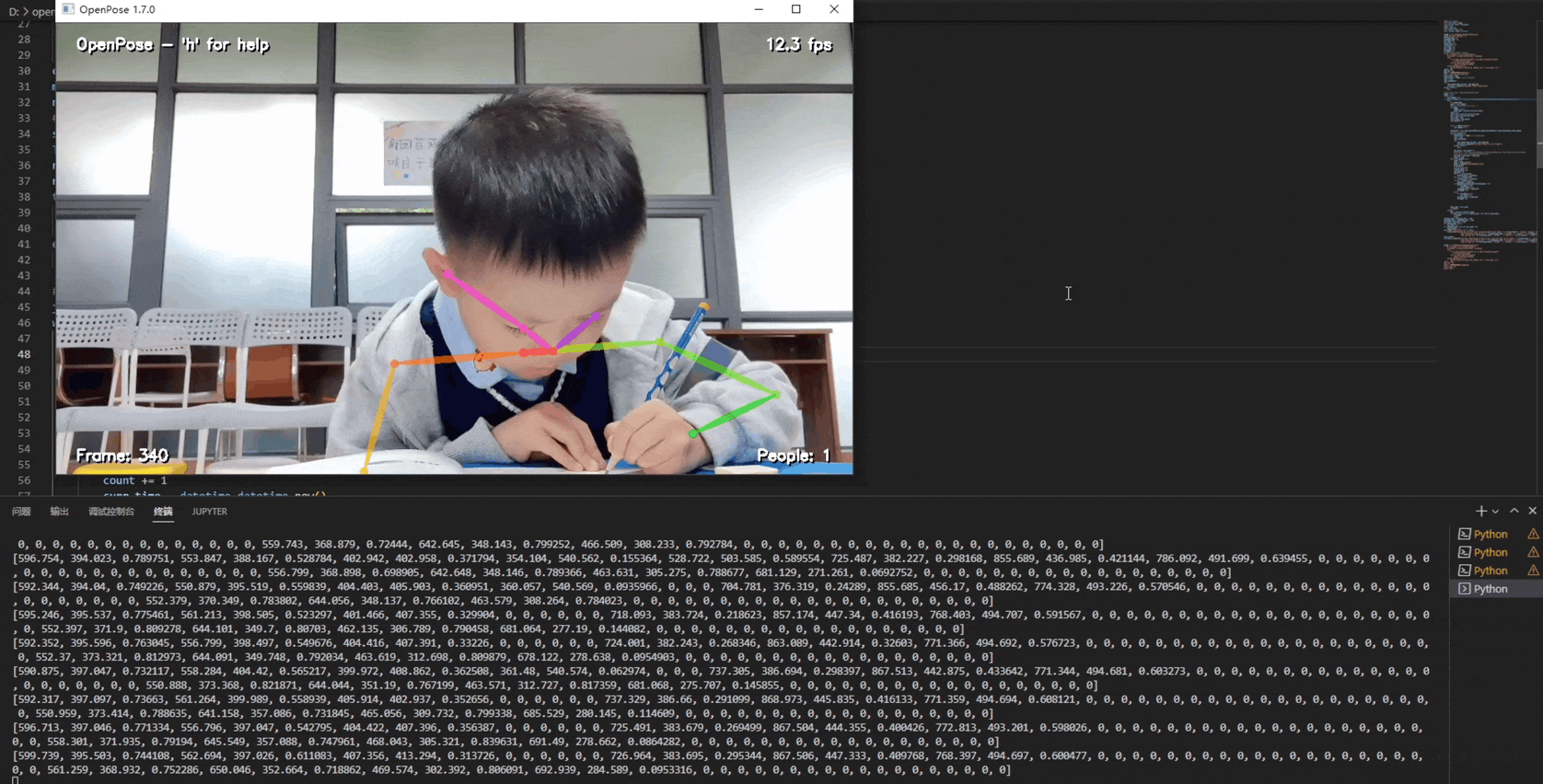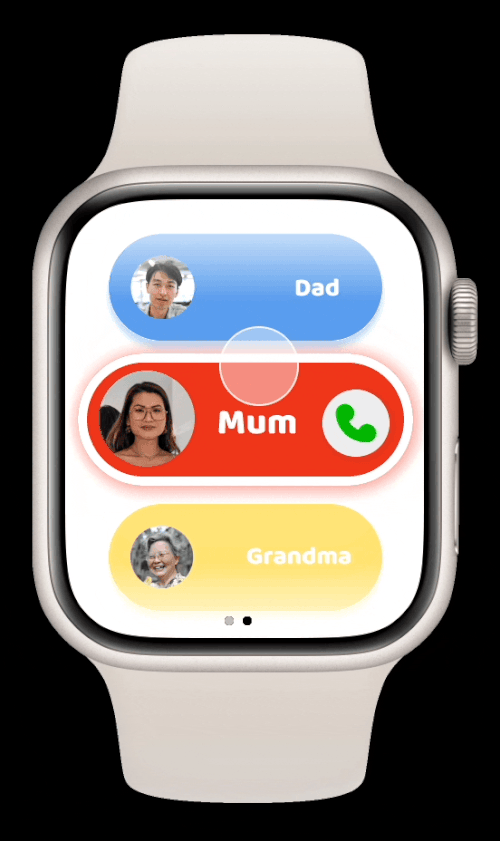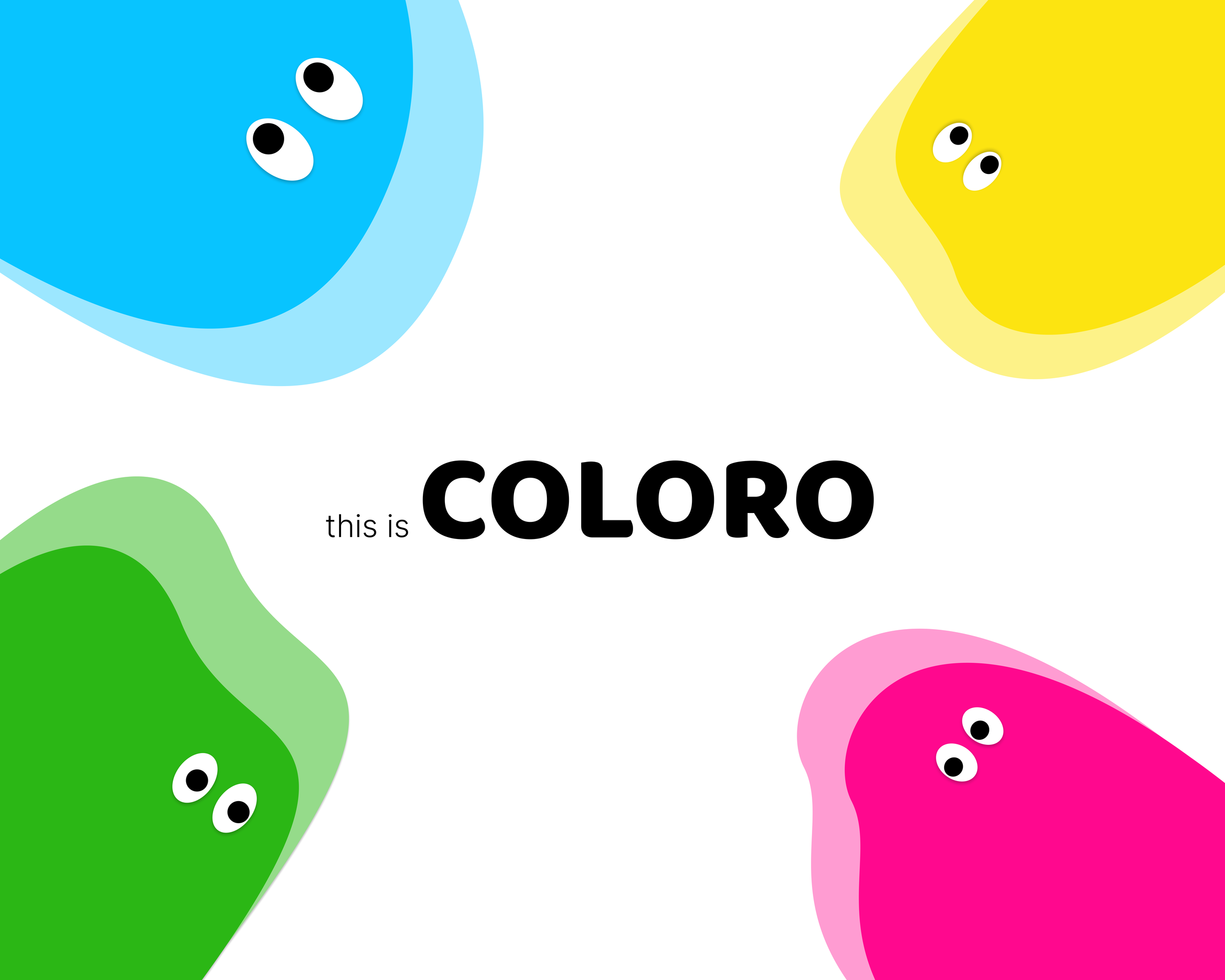
COLORO
Personalized Routine System Specified For Children With ADHD
Overview
COLORO is an interactive digital system that assists in addressing children with ADHD in China’s need for a structured predictable routine that they can follow every day. It helps the family to mitigate stress from within the family and society. Through the integration of color coding, chunking, and rewards in the system, parents can regulate children’s behavior in a more scientific manner, and track or monitor their performance when needed. The clear structure set up in the system also helps children with ADHD build a foundation for success with organization, practicality, and productivity.
Duration: 6 weeks
My Role: User research, Design workshop, Concept development, UI prototyping, Interaction design
Tools: Figma, AfterEffects, Python, Javascript, Illustrator, Indesign, Photoshop
The Challenge
The project started with addressing how to design a system that uses immersive assistive technology to help children with ADHD in China improve their attention span and productivity. In addition, it should emphasize the stress and pressure that the family may face.
Different from the US, ADHD is under-diagnosed and treated in China. Factors including social discrimination, family stress, and lack of professional assistance all contribute to the phenomenon. Children with ADHD in China often do not have access to treatments or therapies that are personalized for themselves, which in turn exacerbates their symptoms and illness.
Hence, the primary objective of COLORO is to offer a more playful and accessible routine establishment process for children with ADHD. Through the effective techniques of color coding, chunking, and rewards, COLORO leads the children to extend their focus and stay on top of their daily tasks. Additionally, it creates a safe and friendly environment for the family together to progress the positive treatment for the children.
#1 Color-coding
Organize And Structure Tasks Based On Your Children’s Preference For Colors
Matching children’s preference of colors and the level of difficulties in each task encourages the children to stay focused and increase their novelty in the long term.
#2 Task Assignments
Establish A Personalized Routine For Your Children
Establishing a structured schedule according to children’s own preference of colors allows them to stay on top of the progress and to-do tasks.
#3 Rewards
Record Points Earned By Your Child To Redeem For Rewards
Rewards are distributed in accordance with children’s task completion performance and the level of difficulty, which motivates children to behave better.
#1 Data Analysis
Generate Insights Regarding Your Children’s Performance
Visualized data and charts will be conducted based on your children’s performance on task completion and concentration time. Python, html, and javascript are incorporated to construct the backend data archive & analysis system.
#5 Movement Tracker + Report
Real-time tracking your
children’s behaviour while away
You can review and receive notification and data analysis about any irregular movements of your children by setting up the included monitoring camera. “Out of Sight” notification will be sent to your phone, in which allows you to contact your child immediately through video/voice call.
Concentration report will be generated when monitoring ends at the end of each tasks, and parents can look it up by clicking on the recent finished task on the home page. Combining openpose with python programming, I am able to construct this unique ADHD Children-centered monitoring system:
#1 Playful Interaction
Improve Attention And Focus With Gamification Features
Your child can always interact with the jelly on their watch to see their progress on asks. The companionship triggers the support and encouragement throughout task completion
#2 Constant Motivation
Keep Track Of The Rewards And Receive Encouragement
Reward points earned are shown after completing each task. Constant voice notifications of encouragement by the jelly and inputted by their parents are sent over the watch
#3 Two-way Communication
Immediate Call To Parents Whenever Facing Questions Or Emergencies
Your children can call you at any location or any time when he/she wants to talk to you. You can always check back on them to ensure their performance and safety.
Project Scoping
Background
Children are characterized by their dependency, vulnerability, and resilience. We all have experienced a period where it was difficult sitting still, paying attention, or controlling impulsive behavior during our childhood. However, for some children, these issues become prevalent and enduring, affecting every aspect of their lives, including personal, academic, and social environments.
The term ADHD refers to Attention Deficit Hyperactivity Disorder, a condition that onsets before the age of seven, and is characterized by its main symptoms of inattention, hyperactivity, and impulsivity.
I started the research by anaylzing the statistics of ADHD diagnosis and tratments between various countries, and locate what the gap is in-between the locations. Statistics have shown that ADHD affects around 11% of school-age children across the globe. An estimated 9.4% of children in the United States have a diagnosis of ADHD, and nearly 77% of them are receiving treatments.
In comparison, a report has shown that the condition affects over 6% of Chinese children, but only a tiny percentage of them receive treatments. Specialists estimated that 90% of children’s ADHD cases in China still go undiagnosed, and only one-third of children who are diagnosed in children receive medication or behavioral treatments.
Meanwhile, early identification and treatment are highly critical to ADHD. The condition may lead to severe consequences without early diagnosis and proper treatment, including family stress, school failure, relationship issues, accidental injuries, and other mental problems.
Survey
A questionnaire was sent out and targeted parents who have a child that has ADHD symptoms in China. The parents were invited to participate in the survey through a non-profit therapy clinic. Followed by some demographic questions, the survey gathered data to understand better people’s attitudes toward ADHD and parents’ struggles in treating their children. Questions such as “What are some common concerns regarding taking your children for diagnosis and treatments” and “What are your ideal treatment mediums and plans” were asked in the survey.
There were a total number of 23 parents participating in the survey. Among them, 7 parents lived in Tier 1 cities, 9 in Tier 2 cities, and the rest in Tier 3 or smaller towns.
How Might We Address ADHD And Create Computational Treatment Strategies (Color-Coding) That Are More Friendly In A Family Setting For Both Children Who Suffer From ADHD And Their Parents In China?
Ideation
Upon ideating the potential outcome for addressing the problem, I started to think about how I can create a system that can both help parents to assign schedules and apply the routine to their children, and also monitor and encourage children’s positive behavior. As such, I looked into the various devices that may achieve this goal when working and connecting together.
The integration of the app, watch, and monitoring camera can help in developing and accounting for all proposed features into one system.
Prototyping And Usability Testing
I conducted thorough usability testing after finalizing the user flow and drafted low-fidelity prototypes to validate how users approach the system and the touchpoints. Some minor adjustments were brought up by the participants for improvement.
For the application, Lu Wang, a mother of a 5-year-old mentioned that she expects the camera monitor feature can be accessed throughout the App, instead of having to go to one particular page for tracking the child’s movement. Hence, I inputted a button for the camera monitor on every page of the homepage, archive, reward, and account so that it is more convenient for parents or guardians to watch their movements.
A grandfather in his 70s, Hongliang Zhang, expressed that he is unconfident with the current technology and hoped that the interface for the calendar section can be easy enough for him to assign tasks while the child’s parents are away. In accordance, I added a feature in the user flow that allows users to easily add previous set assignments into the current schedule.
Regarding the watch application for children, an elementary student with ADHD suggested making the progression intervention more obvious so that he can notice how far he has come. Therefore, I redesigned the progress bar so that children can check how they are staying on top of their tasks.




